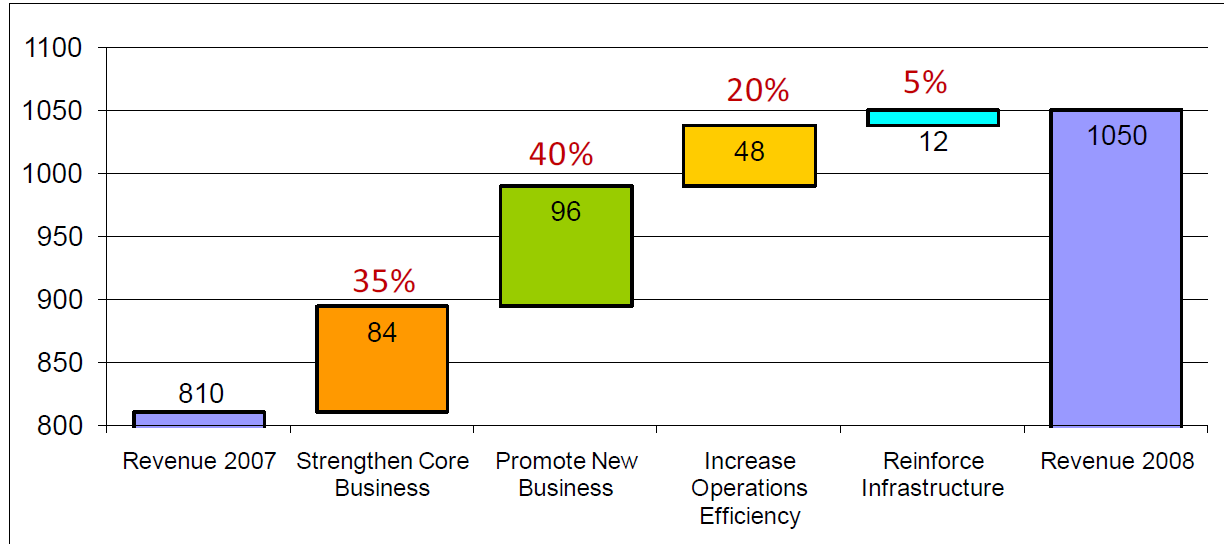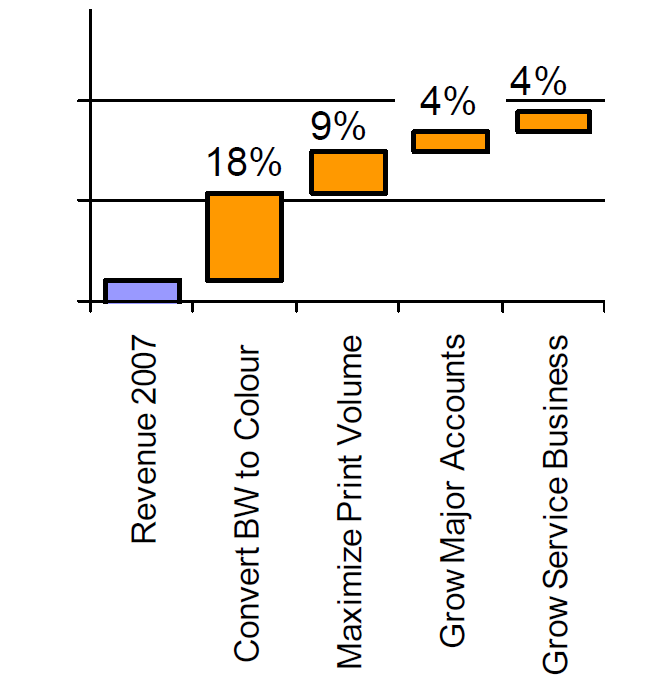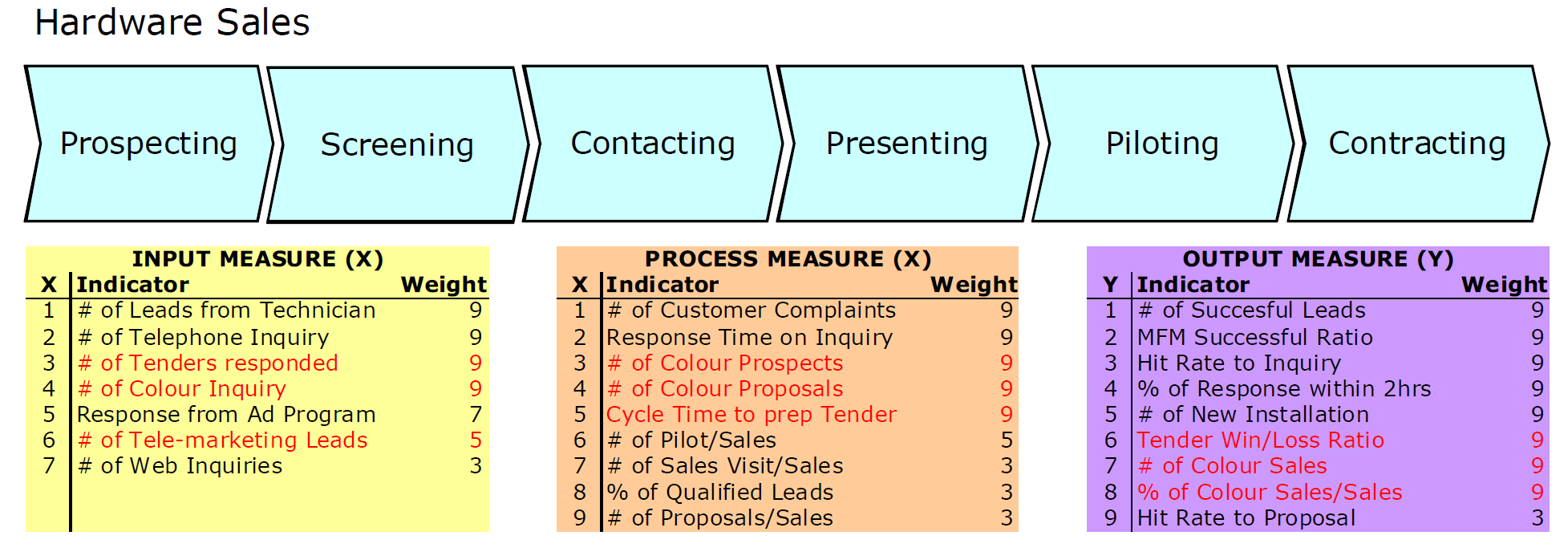
Strategy Deployment is Key
Strategy Deployment is as Important as Having the Right Strategy.
Developing a compelling vision and mission statement as well as a sound strategy is vital for any organisation. Equally important is the translation of the strategy, the strategy deployment, into the day-to-day business.
Step 1: Tailoring Corporate Strategy for Local Realities
Our client, a Japanese office equipment manufacturer with ambitious growth targets, called for a strategy deployment meeting. Input for the meeting was a well written Mission Statement together with the comprehensive Strategy Map, based on the principle of the Balanced Scorecard divided into the sections Financials, Customers, Processes and Learning & Growth. The Japanese head quarter had developed Global Strategic Outcomes feeding into the Strategy Map (Figure 1).
- How do we adapt this strategy map to our different businesses with their distinctive heritage all over the Asia pacific region?
- How can we make sure we support the “One Business” idea even though we respect our differences?
- Can we put a process in place that avoids asking the first two questions every year again?

The answer to these questions lies in the methodology used to deploy the strategy. On the one hand, this methodology should give a clear framework of requirements and steps for strategy deployment. On the other hand, it should leave enough room for flexibility to adjust for local realities and prerequisites.
The answer to these questions lies in the methodology used to deploy the strategy. On the one hand, this methodology should give a clear framework of requirements and steps for strategy deployment. On the other hand, it should leave enough room for flexibility to adjust for local realities and prerequisites.

Step 2: Strategy Deployment by Projecting Strategy into Processes


Step 3: Defining a “Dashboard” to Steer the Business

Step 4: Creating Ownership and Accountability Boosts Strategy Deployment
- People understand the system and buy-in.
- The system is constantly being optimised to keep it up-to-date and credible.
- The management walks the talk.
Lastly, they have a chance to strengthen their decision making process with supporting data from their business dashboard.
Step 5: Identifying Gaps and Improving Performance
Having targets and current performance enables the process owner to draw conclusions about improvement activities necessary and potential application of appropriate methods such as Lean Six Sigma, LIT or WorkOut.
Strategy Deployment – Conclusion
- All Posts
- AI
- BPR
- Career Development
- Cases
- Change
- Coaching
- Competency
- Customers
- Data Science
- Enablers
- HR Strategy
- Innovation
- Leadership
- Lean Six Sigma
- Manufacturing
- OD
- Operations
- Service
- Staff Development
- Strategy
- Workforce Planning
- Working Capital
- YOG
- Back
- DISC







